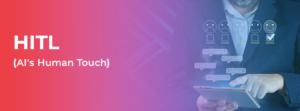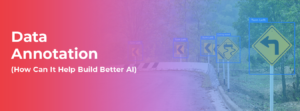Deep Dive into LiDAR Annotation for Cutting-Edge Perception Systems
Today, a lot of different technological applications throughout the world employ LiDAR Annotation equipment. It has several applications, including surveying, mining, archaeology, and more. However, a challenge of perception systems was to accurately illustrate the world in 3D. This brought about LiDAR systems.
Table of Contents
What are LiDAR Annotation Systems?

The full meaning of LiDAR is Light Detection and Ranging. It uses light in the form of laser pulses to measure and estimate the distance between objects. The rise of LiDAR Annotation is primarily attributed to the acceptance of autonomous vehicles. In reality, LiDAR has made autonomous vehicles safer by continuously gathering data from the area around the vehicles at all times.
Furthermore, distances between objects may be measured during a survey with the use of LiDAR as a remote sensing technique. After collecting this data, a 3D model of the item may be made.
LiDAR systems are also utilized in the automotive sector to see obstacles including other vehicles, pedestrians, and buildings. The development of AI has also contributed to LiDAR’s increased efficiency.
Understanding LiDAR Annotation

It’s obvious that data drives everything these days, and that data quality is critical for every business. Also, for autonomous vehicles to be effective, the data used to make detection decisions must be precise.
LiDAR Annotation is the process of labeling point cloud data to provide meaningful information for perception systems(LiDAR). Due to the structure of different terrains, 2D cameras were finding it difficult to obtain necessary information. However, LiDAR uses a combination of light and laser technology to detect the range or depth of objects.
How does LiDAR Annotation work?

If we are to split a LiDAR Annotation system, it generally consists of 4 main parts:
- Laser: This part shoots out near-infrared or ultraviolet light waves toward objects to measure the distance.
- Scanner: This acts as a regulator for the LiDAR system. It controls the speed at which the laser can scan objects and determines the maximum distance the laser can reach.
- Sensor: When the laser sends light pulses toward objects, the pulses bounce back and are captured by the sensors. This measures the time it takes for a pulse to reach the object and travel back. By doing that, it estimates the distance between the LiDAR system and the target object.
- GPS: This tracks the position of the LiDAR system to ensure the distance measured by the sensor is accurate.
Nowadays, through advances in technology, LiDAR systems can send up to 500k pulses per second. By combining all these parts together, coupled with deep learning algorithms, LiDAR systems measure, process, and interpret objects in close proximity.
Importance of LiDAR Annotation Systems

There are various uses of LiDAR systems across various fields around the world. So, Let’s see why its importance is skyrocketing.
- Agriculture: In this field, LiDAR systems are used to create accurate farmland maps to show the areas that will produce high, medium, or low farm products. Furthermore, LiDAR can provide information about crop health, irrigation planning, and soil density to help farmers make the right decisions for their crops.
- Archeology: LiDAR has a lot of uses in archeological discoveries and research. It can be used to map out archaeological sites easily and cheaply. Additionally, it can detect hidden sites and produce different terrain maps for easier exploration in uncharted areas.
- Self-driving Cars: As we said above, LiDAR is crucial in self-driving cars to enable them to have a smooth and safe experience. Moreover, it helps detect objects around their surroundings, process them in real time, and interpret the right result.
- Military: LiDAR helps create 3D terrain maps that help military personnel make the most informed decisions on the war front.
Conclusion
In simple words, LiDAR is a cutting-edge perception technology that helps create 3D images of objects it has scanned. By sending out laser light waves and receiving the pulses using sensors, LiDAR systems measure the distance between the surface and the target area. Finally, with artificial intelligence, LiDAR systems will see exponential growth in their efficiency and accuracy.
Get Started with Macgence

Get started with Macgence, your ultimate destination for LiDAR annotation solutions. Our services encompass semantic segmentation, object detection accuracy, and object classification catering to all your needs. With Macgence, you’re assured of scalability, allowing us to handle projects of any size, and ensuring on-time delivery. So, we take pride in providing superior annotation quality, as our skilled annotators meticulously label your data to optimize model performance. Our commitment to zero internal bias ensures fairness and neutrality in annotations, enhancing your LiDAR systems’ integrity. Regardless of your industry, Macgence’s cross-industry compatibility ensures customized solutions tailored to your specific needs. So, Start today and experience the power of LiDAR annotation at Macgence.
Frequently Asked Questions (FAQ’S)
Q1. What is LiDAR?
Q2. How does LiDAR work?
Q3. What is LiDAR Annotation?
You Might Like
February 28, 2025
Project EKA – Driving the Future of AI in India
Artificial Intelligence (AI) has long been heralded as the driving force behind global technological revolutions. But what happens when AI isn’t tailored to the needs of its diverse users? Project EKA is answering that question in India. This groundbreaking initiative aims to redefine the AI landscape, bridging the gap between India’s cultural, linguistic, and socio-economic […]
March 24, 2025
Natural Language Generation (NLG): The Future of AI-Powered Text
The ability to generate human-like text from data is not just a sci-fi dream—it’s the backbone of many tools we use today, from chatbots to automated reporting systems. This revolution in artificial intelligence has a name: Natural Language Generation (NLG). If you’re an AI enthusiast or a tech professional, understanding NLG is essential for keeping […]
March 24, 2025
HITL (Human-in-the-Loop): A Comprehensive Guide to AI’s Human Touch
The integration of Artificial Intelligence (AI) in various industries has revolutionized how businesses operate. However, AI is not infallible, and many applications still require human intervention to enhance accuracy, efficiency, and reliability. This is where the concept of Human-in-the-Loop (HITL) becomes essential. HITL is an AI training and decision-making approach where humans are actively involved […]
March 7, 2025
Data Annotation – And How Can It Build Better AI in 2025
In the world of digitalized artificial intelligence (AI) and machine learning (ML), data is the core base of innovation. However, raw data alone is not sufficient to train accurate AI models. That’s why data annotations comes forward to resolve this. It is a fundamental process that helps machines to understand and interpret real-world data. By […]


 Previous Blog
Previous Blog







